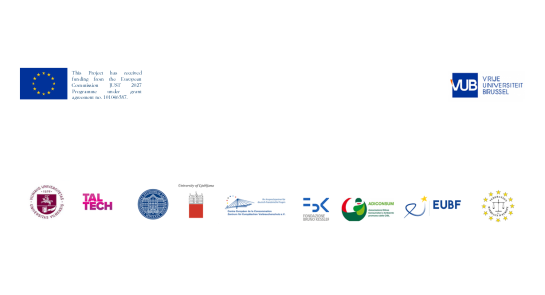
SCAN II Project
About
The SCAN II Project is developed upon the results of the SCAN project and aims at better enforcement of the European Small Claims Procedure (ESCP) judgments through creating a Roadmap of the 26 EU Member States’ (MSs) ESCP enforcement rules on the one hand and simplifying and digitalising these enforcement procedures on the other. As regards the first objective, the existing lack of harmonization of MSs’ enforcement rules signifies a major weakness in cross-border enforcement of ESCP judgments, making it difficult for consumers (as end-users) and lawyers and bailiffs (as operators) to be aware of the existence and practical functioning of different EU enforcement rules. With respect to simplifying and digitalizing the ESCP enforcement procedures – based on a needs assessment approach and the importance of establishing a fully tech-driven mechanism for promoting citizens’ access to justice – the SCAN II Project will develop an IT platform and a Blockchain System to fill the existing gap in the ESCP enforcement across the Union. Embracing a combination of theoretical and practical approach, the SCAN II Project Consortium of experts in international civil procedural law, private international law, and information technology will work in a joint collaboration to: a) pursue clarity in analysing the existing enforcement rules by creating a Roadmap, b) establish an IT platform providing effective guidance on the EU enforcement rules concerning the ESCP judgments; and c) develop a Blockchain System for promoting the enforcement procedures. The project will involve over 100 lawyers, 100 bailiffs, 26 consumer associations, 5 policymakers, and 1500 EU consumers across the Union.
European Small Claims Procedure (ESCP)
Regulation (EC) No 861/2007 of 11 July 2007 on European Small Claims Procedure (hereinafter ESCP) established by the EU Commission as a uniform regime that acts as a non-mandatory alternative to the existing ordinary national procedures in the Member States for dealing with cross-border small claims. Initial cap for a small claim was set at 2000 euros.
With the view of improving the efficiency of the ESCP Regulation (hereinafter ESCPR) and encouraging consumers to use it for their cross-border small claims, the EU Commission amended this Regulation by Regulation (EU) 2015/2421 which applied some changes to increase the efficacy of this tool. In the updated regulation maximal amount for a small claim was increased to 5000 euros.
The ESCP is available to litigants as an alternative to the procedures existing under the laws of the Member States. A judgment given in the European Small Claims Procedure is recognized and enforceable in another Member State without the need for a declaration of enforceability and without any possibility of opposing its recognition.
Standard Forms have been drawn up for the Small Claims procedure and are available here in all languages. To start the procedure, “Form A” must be filled in. Any relevant supporting documents, such as receipts, invoices, etc. should be attached to the form.
Form A must be sent to the court that has the jurisdiction. Once the court receives the application form it must fill in its part of the “Answer Form”. Within 14 days of receiving the application form, the court should serve a copy of it, along with the Answer Form, on the defendant. The defendant has 30 days to reply, by filling in his or her part of the Answer Form. The court must send a copy of any reply to the plaintiff within 14 days.
Within 30 days of receiving the defendant’s answer (if any) the court must either give a judgment on the small claim, or request further details in writing from either party, or summon the parties to an oral hearing. If there is an oral hearing, it is not mandatory to be represented by a lawyer and if the court has appropriate equipment the hearing should be carried out through videoconference or teleconference.
With the certificate issued by the court (which might need to be translated into the language of the other Member State), and a copy of the judgment, the judgment is enforceable in all the other Member States of the European Union, without any further formalities. The only reason that enforcement in another Member State can be refused is if it is irreconcilable with another judgment in the other Member State between the same parties. Enforcement takes place in accordance with the national rules and procedures of the Member State where the judgment is being enforced.
Project Consortium
Project Coordinator:
Vrije Universiteit Brussel (VUB)
Beneficiaries:
Univerza V Ljubljani (UL)
Sveuciliste U Zagrebu - Pravni Fakultet (UniZg)
Adiconsum Associazione Difesa Consumatori Aps (Adiconsum)
Fondation De La Chambre Europeenne Des Huissiers De Justice (EUBF)
Fondazione Bruno Kessler (FBK)
Tallinna Tehnikaülikool (TalTech)
Publications
Lorem ipsum dolor sit amet, consectetur adipiscing elit. Nam sed euismod risus. Fusce auctor tincidunt arcu. Praesent eget auctor quam. Nunc lacinia, ipsum et hendrerit laoreet, urna nisi porta ex, a mollis eros diam at dolor. Etiam nec arcu metus. Nunc non viverra lorem, fringilla fermentum leo. Vestibulum justo orci, ultrices a vehicula eu, egestas non ex. Vivamus pretium est non turpis auctor elementum. Sed in justo bibendum, congue nulla ut, feugiat est. Pellentesque aliquam odio at diam facilisis, ac tempor neque egestas. Mauris auctor aliquam fermentum. Nulla malesuada dignissim orci, quis blandit ex auctor nec. Vestibulum nec sapien maximus, tristique nisi sit amet, luctus augue. Praesent facilisis aliquet efficitur. Phasellus et dolor quam. Nunc libero quam, gravida sed gravida nec, ultrices sed magna.
